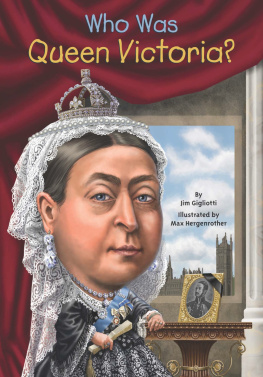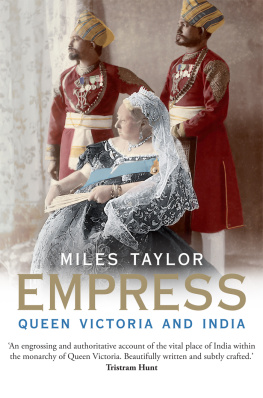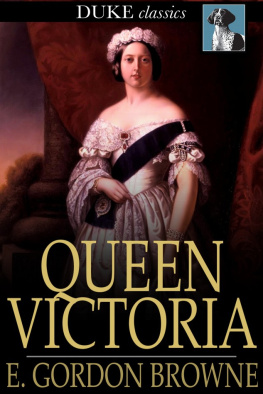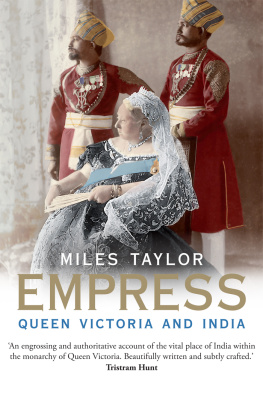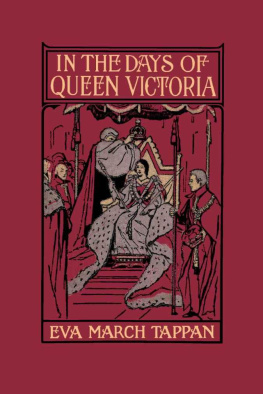Hector Bolitho - The Reign of Queen Victoria
Here you can read online Hector Bolitho - The Reign of Queen Victoria full text of the book (entire story) in english for free. Download pdf and epub, get meaning, cover and reviews about this ebook. year: 2007, publisher: Kessinger Publishing, LLC, genre: Art. Description of the work, (preface) as well as reviews are available. Best literature library LitArk.com created for fans of good reading and offers a wide selection of genres:
Romance novel
Science fiction
Adventure
Detective
Science
History
Home and family
Prose
Art
Politics
Computer
Non-fiction
Religion
Business
Children
Humor
Choose a favorite category and find really read worthwhile books. Enjoy immersion in the world of imagination, feel the emotions of the characters or learn something new for yourself, make an fascinating discovery.

- Book:The Reign of Queen Victoria
- Author:
- Publisher:Kessinger Publishing, LLC
- Genre:
- Year:2007
- Rating:5 / 5
- Favourites:Add to favourites
- Your mark:
- 100
- 1
- 2
- 3
- 4
- 5
The Reign of Queen Victoria: summary, description and annotation
We offer to read an annotation, description, summary or preface (depends on what the author of the book "The Reign of Queen Victoria" wrote himself). If you haven't found the necessary information about the book — write in the comments, we will try to find it.
The Reign of Queen Victoria — read online for free the complete book (whole text) full work
Below is the text of the book, divided by pages. System saving the place of the last page read, allows you to conveniently read the book "The Reign of Queen Victoria" online for free, without having to search again every time where you left off. Put a bookmark, and you can go to the page where you finished reading at any time.
Font size:
Interval:
Bookmark:
The Reign of Queen Victoria
Hector Bolitho
Copyright Hector Bolitho 1949.
The right of Hector Bolitho to be identified as the author of this work has been asserted by him in accordance with the Copyright, Designs and Patents Act, 1988.
First published in the United Kingdom in 1949 by Collins.
This edition published in 2014 by Endeavour Press Ltd.
In Memory of H.R.H. Prince Hubertus of Saxe-Coburg-Gotha
Table of Contents
Authors Note
I HAVE tried not to burden this book with too many footnotes, which make pages unattractive to the average reader. Where possible I have incorporated my authorities in the text. The sources and references acknowledge my debt to the standard works of history and biography and to other material, old and new, which has been useful to me.
I wish to thank Mr. Eugene Charles Adam for his criticism and help while correcting the proofs of my book.
Foreword
DURING the years since my biography of the Prince Consort and my other books describing Queen Victorias reign were published, many letters have been found in Germany, and some in England; enough to justify my writing another full-length book, blending the old material with the new.
There were other reasons why this was desirable. During the war the English stocks of most of my books were destroyed by bombing. They included my biography of the Prince Consort, my book covering the latter half of Queen Victorias reign, and some volumes of Victorian letters which were almost out of print. The books had become inadequate because they were written many years ago, when stores of letters in Germany and elsewhere had not been found, or were not available to biographers. My own estimate of many aspects of the period have developed or changed because of facts in these new documents and, I hope, through the growth of my own judgment. Also, the death of the last of Queen Victorias children made me free to express opinions and publish material which would have been an ungracious intrusion while they were alive. Other sources of new information helped me to realise that there was room for a further book. After my early biographies were published many old Victorians came forward, some of them retired members of Queen Victorias court, with letters and criticisms, and recollections, going back to the eighteen-sixties. I made notes of these at the time and have used them in this new record of Queen Victorias reign.
When I began my search for fresh material, some surprising documents and facts came to light. The story of the relationship between the Duke of Kent, father of Queen Victoria, and his mistress, Madame de St. Laurent, has always been misunderstood and wrongly told.
I found a descendant of Madame de St. Laurent and, through him, material which has made it possible for me to tell the story of her life, before and after her relationship with the Duke, proving her to be different from what gossip would have us believe. I have to thank this descendant of Madame de St. Laurent, who wishes to remain anonymous, Mr. Antoine Roy, Quebec Provincial Archivist, and Mr. Paul Rainville, Curator of the Muse de la Province, Quebec, for helping me to establish facts relating to the life of the Duke and Madame de St. Laurent when they lived together in Canada.
The most important new letters are some two hundred written by Queen Victoria to the Empress of Prussia, found in the archives in Charlottenburg and first edited by myself in 1937. These letters are used, with the gracious permission of His Majesty King George VI. There are also some forty letters written by the Prince Consort to his tutor, which I unearthed in Coburg and which have never been used before. These are now in the archives at Windsor Castle, and I have again to thank His Majesty King George VI for permission to use them.
I have also been able, with the help of Sir Owen Morshead, Librarian at Windsor Castle, and the librarian at the Foreign Office, to use the two forms of the famous dispatch sent by the British Government to the United States Government at the time of the Trent affair, in 1861. This enables us for the first time to see exactly what changes the Prince Consort made in the dispatch, on his deathbed; changes allegedly so important, that the Prince was credited with averting war between Britain and the United States.
One minor but interesting new source was the files of early American newspapers. I have always felt that biographers of Queen Victoria neglected to trace the development of Americas changing attitude towards the Monarchy, after the hatred bred by the War of Independence. I made a journey to Hartford, Connecticut, and found many interesting details in the Hartford Times and Courant , which helped me to fill in my picture.
All these new sources seemed to justify my writing the story of Queen Victorias reign, once more, as my final book on the subject, after almost nineteen years of study, which began when I found the mass of important letters written by the Prince Consort to his brother, in the archives in Coburg, in 1927.
HECTOR BOLITHO
Chapter One 1817
IN 1817, the plan to draw the small principalities of Germany into the Prussian net was still a dream. Prince Bismarck, who was to realise the dream, was a baby, two years old. The peaceful states still kept their identity and were independent of the ambitious, efficient power in the north. Coburg was a quiet, almost placid little duchy, like the neighbouring duchy of Gotha. Their ruling princes were neither royal nor grand and they lived in castles set on high hills.
The Duke of Saxe-Coburg-Saalfeld was an amiable old libertine. His neighbour, the Duke of Saxe-Gotha-Altenburg, was a kindly but foolish man, who had tried to ingratiate himself with Napoleon by building him a carriage in the shape of an egg, painted green and gold. Napoleon had been so indignant when he saw the ridiculous vehicle that he turned from it and made his way into Gotha on foot.
The Duke of Saxe-Coburgs eldest son, Ernst, was married to the Duke of Saxe-Gothas only daughter, Luise, in August, 1817, when the parched summer fields were gay with blue chicory flowers. Princess Luise was then a girl of sixteen, radiating gracefulness and bewitching her surroundings.
Little more than a year before her betrothal, Princess Luise had been confirmed; she was still so young that after the ceremony she threw herself about her stepmothers neck and burst into tears. But the signs of shyness passed and she was almost happy when she drove over the border of her fathers duchy, to live in Coburg.
On the day of his daughters betrothal, the Duke gave one thousand loaves of bread to the poor and, at the feast after the wedding, his orange garden shone with the good-mannered of all ranks. As the bride and bridegroom were exchanging rings before the altar, thirty-six cannon shots announced the glorious moment to the countryside.
When Luise was alone with her husband she cried once more. There was one friend in Gotha she was to miss with all her heart, Auguste von Studnitz, with whom she had shared the surprises of childhood. She wrote to Auguste of the tears she had wept as she sat beside her husband, driving to her new home, My Angel had great difficulty in comforting me. But she laughed when they went to a concert in Coburg, because the song that greeted them was, Hail Duke! Hail Duchess! Soon you will rock Princes in your lap. Luise wrote to her friend, Is that not funny? I had to think immediately of the Holy Trinity.
Among those waiting to help Princess Luise in Coburg was her mother-in-law, later described by Queen Victoria as a most remarkable woman, with a most powerful, energetic, almost masculine mind, accompanied with great tenderness of heart and extreme love for nature.
The Duchess did all she could for the poor little woman and wrote of Luise in her diary, She is a charming, tiny being, not beautiful, but very pretty, through grace and vivacity. Every feature of her face has expression; her big blue eyes often look sad from under her black lashes, and then again, she is a happy, wild child...I hope she will still grow as she is very short...I had half the town for tea because everybody wished to congratulate me.
Next pageFont size:
Interval:
Bookmark:
Similar books «The Reign of Queen Victoria»
Look at similar books to The Reign of Queen Victoria. We have selected literature similar in name and meaning in the hope of providing readers with more options to find new, interesting, not yet read works.
Discussion, reviews of the book The Reign of Queen Victoria and just readers' own opinions. Leave your comments, write what you think about the work, its meaning or the main characters. Specify what exactly you liked and what you didn't like, and why you think so.



